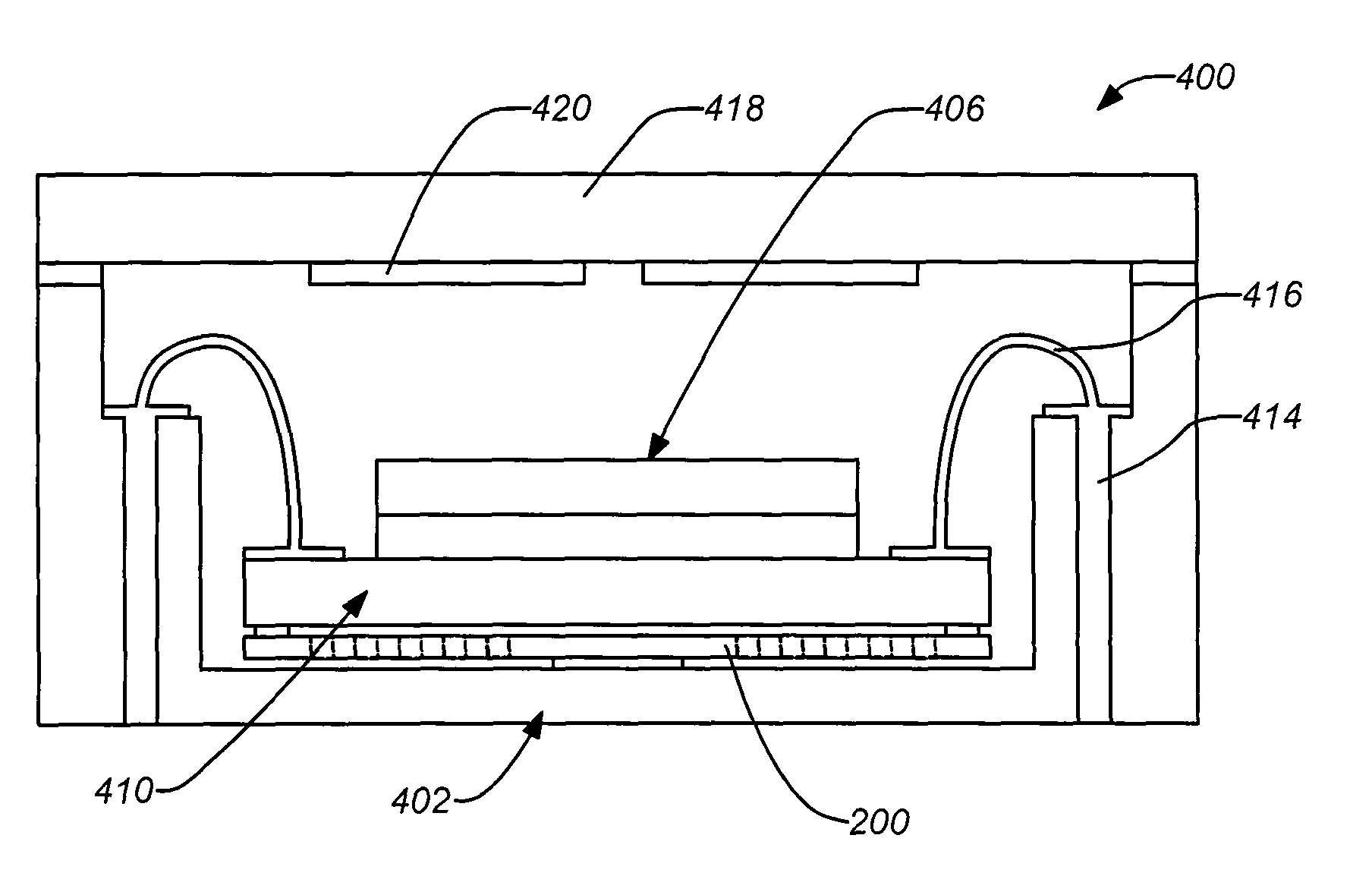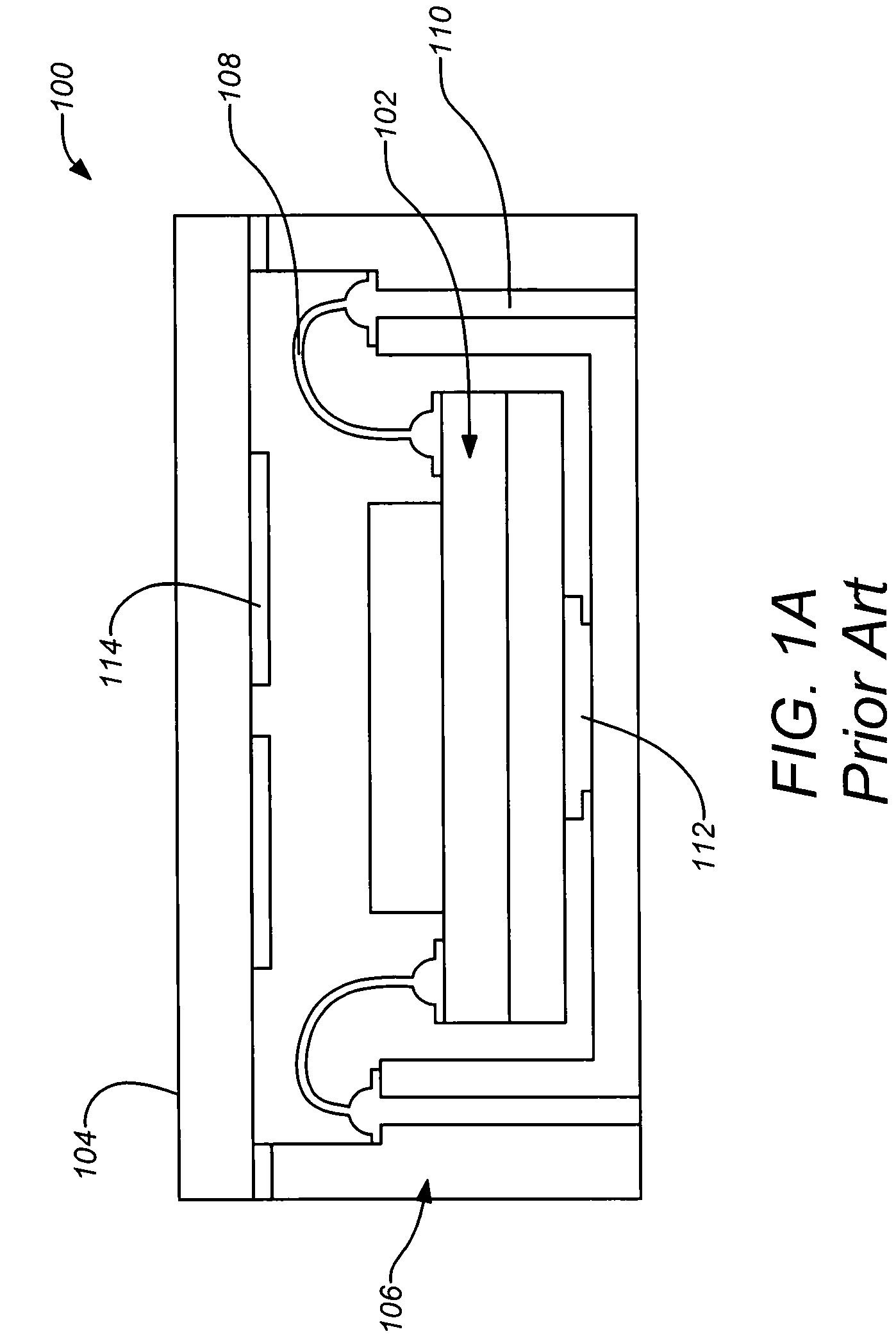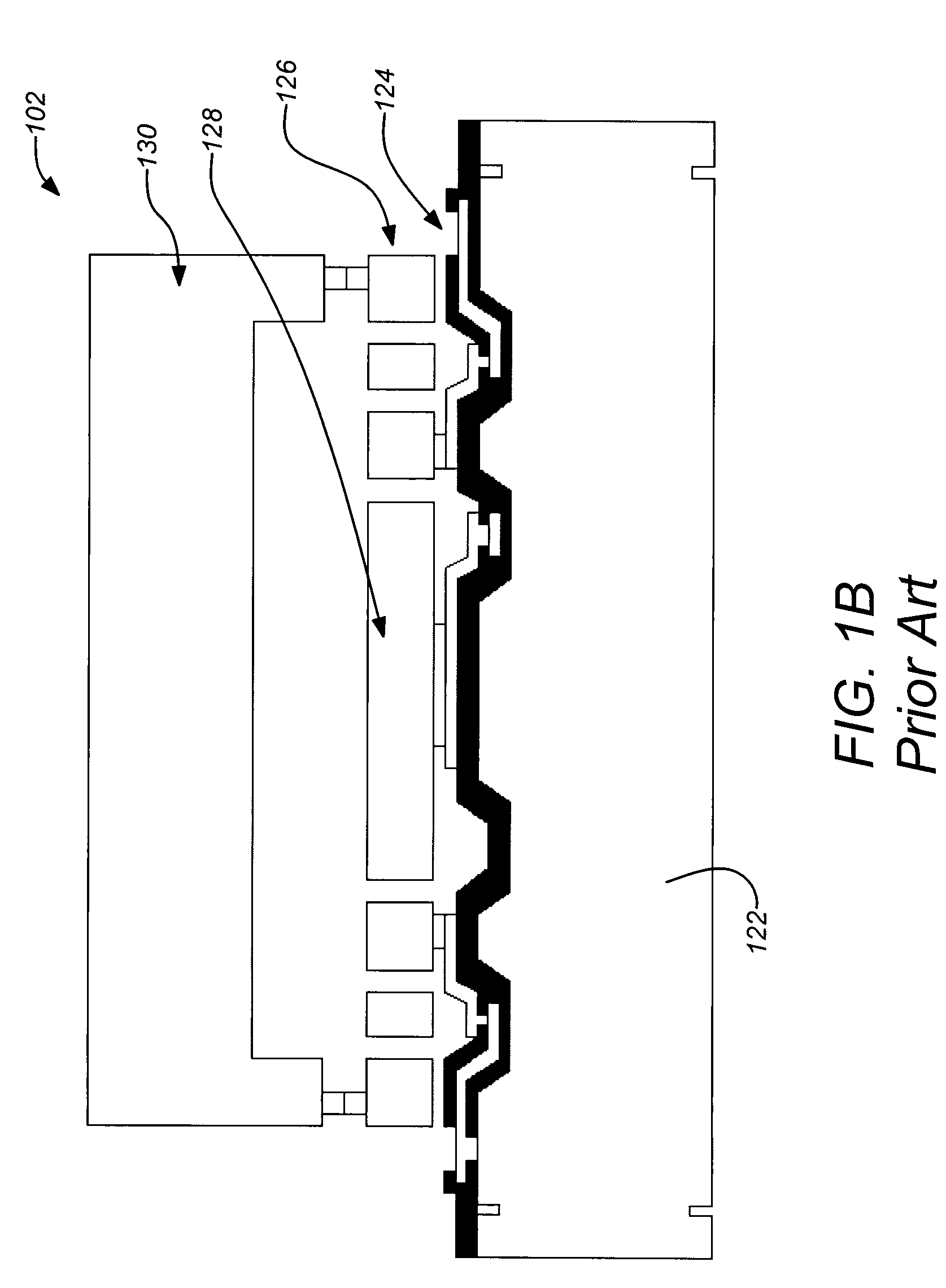Method of producing an isolator for a microelectromechanical system (MEMS) die
a technology of microelectromechanical system and isolator, which is applied in the field of gyroscopes, can solve problems such as excessive stress or distortion of the package, and achieve the effects of reducing cte mismatch, small displacement, and small resistan
- Summary
- Abstract
- Description
- Claims
- Application Information
AI Technical Summary
Benefits of technology
Problems solved by technology
Method used
Image
Examples
Embodiment Construction
[0032]1. Overview
[0033]A thermal and mechanical isolator has been conceived to overcome the deficiencies described above. Embodiments of the present disclosure employ a single layer isolator that can replace the large bond pad of a conventional DRG MEMS die (e.g. as described in FIGS. 1A & 1B in the next section). The isolator may be inserted between the MEMS die and the leadless chip carrier (LCC) package bottom in a known DRG design. As used herein, a MEMS die may be any die that includes MEMS device. For example, a MEMS die may comprise a MEMS device manufacture from a semiconductor material (e.g. silicon) or an insulator (e.g. quartz). The structure of the isolator comprises a single semiconductor layer having a central region and a plurality of substantially radial isolation beams extending therefrom, each to a bond pad arranged in a radial symmetric pattern. The bond pads are bonded to the MEMS die, e.g. a DRG die, and the vacuum package is bonded to the central region of the ...
PUM
| Property | Measurement | Unit |
|---|---|---|
| temperature | aaaaa | aaaaa |
| diameter | aaaaa | aaaaa |
| diameter | aaaaa | aaaaa |
Abstract
Description
Claims
Application Information
 Login to View More
Login to View More - R&D Engineer
- R&D Manager
- IP Professional
- Industry Leading Data Capabilities
- Powerful AI technology
- Patent DNA Extraction
Browse by: Latest US Patents, China's latest patents, Technical Efficacy Thesaurus, Application Domain, Technology Topic, Popular Technical Reports.
© 2024 PatSnap. All rights reserved.Legal|Privacy policy|Modern Slavery Act Transparency Statement|Sitemap|About US| Contact US: help@patsnap.com










